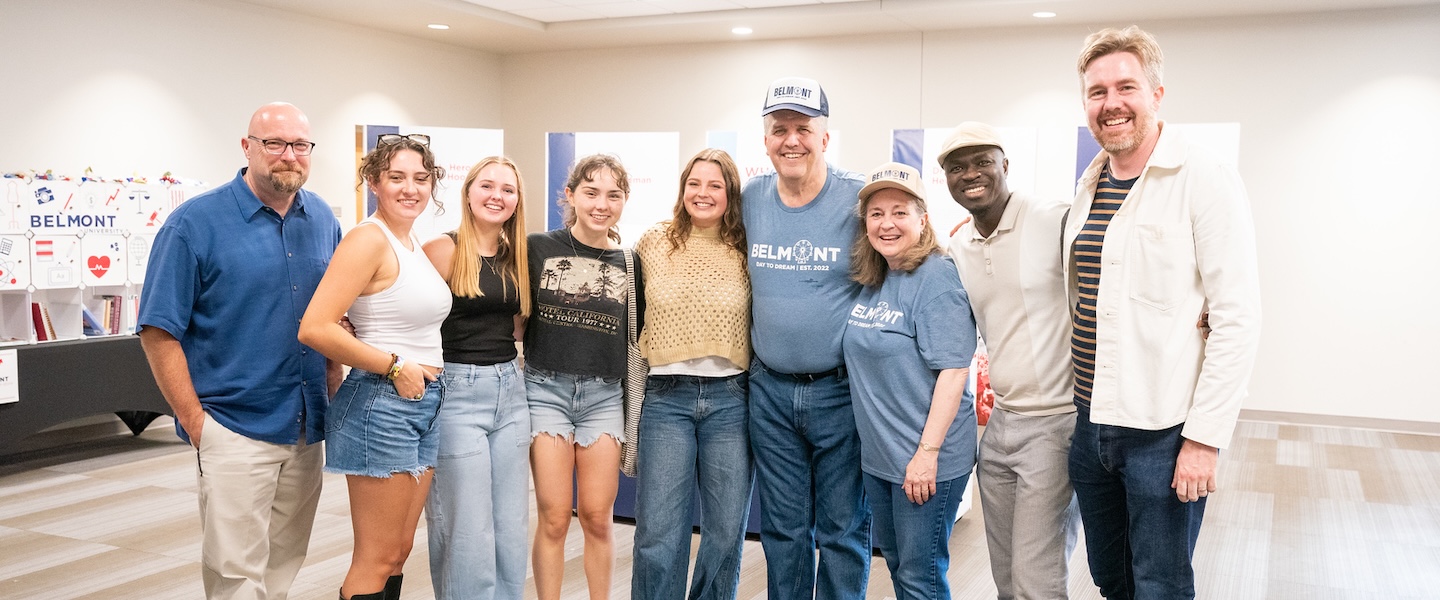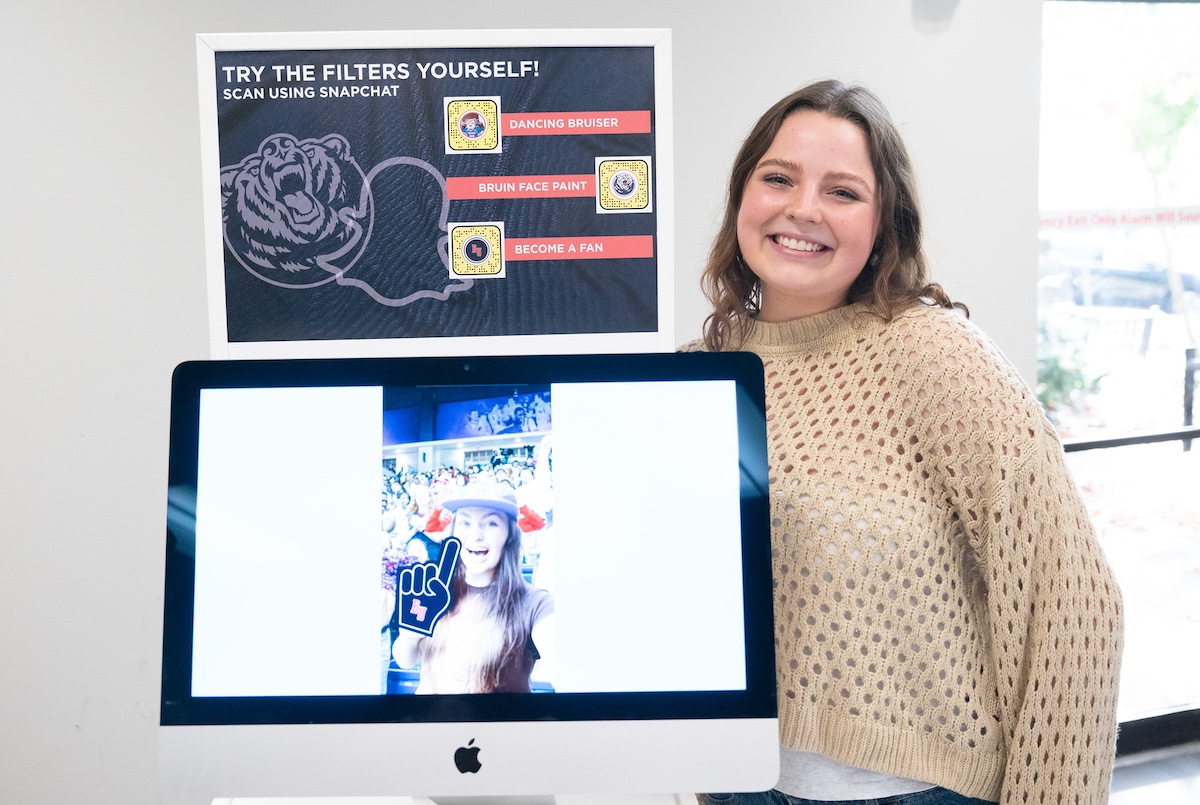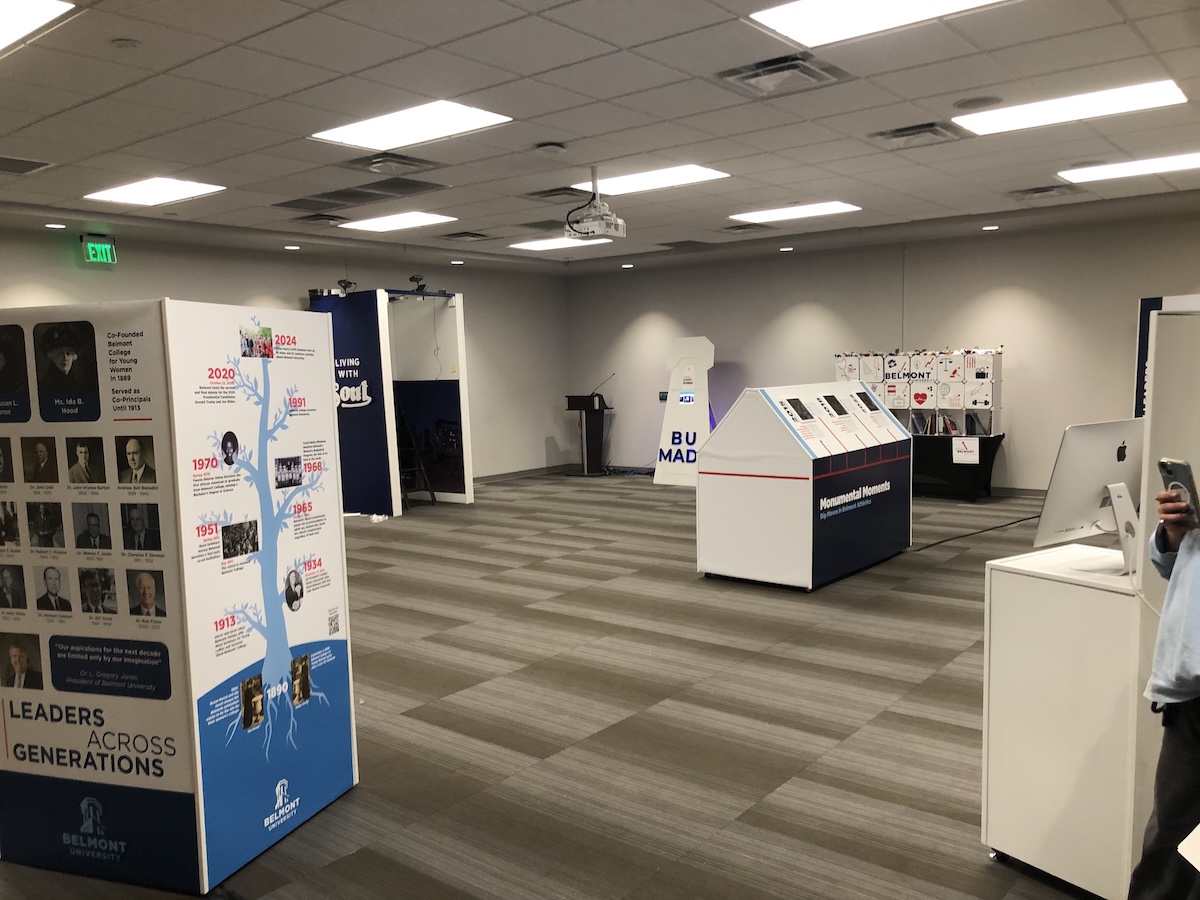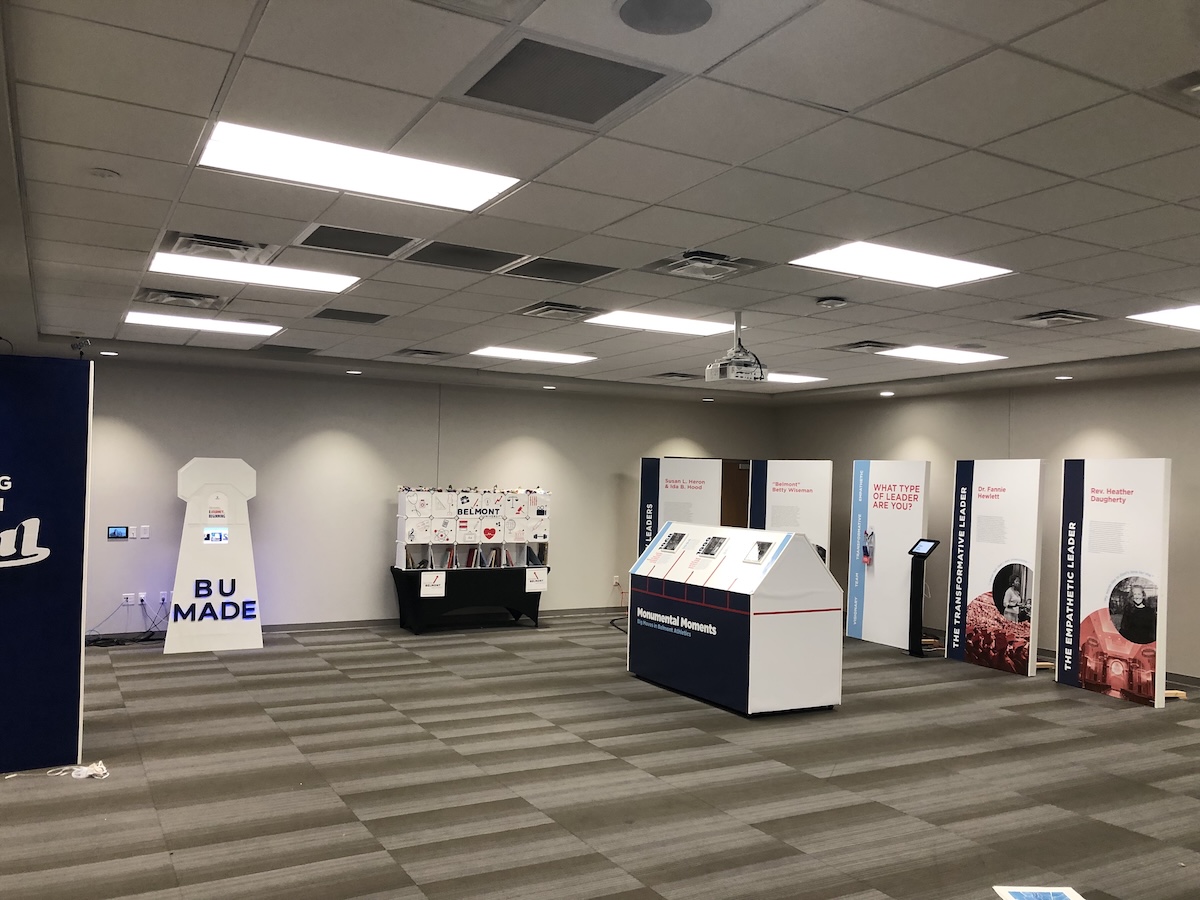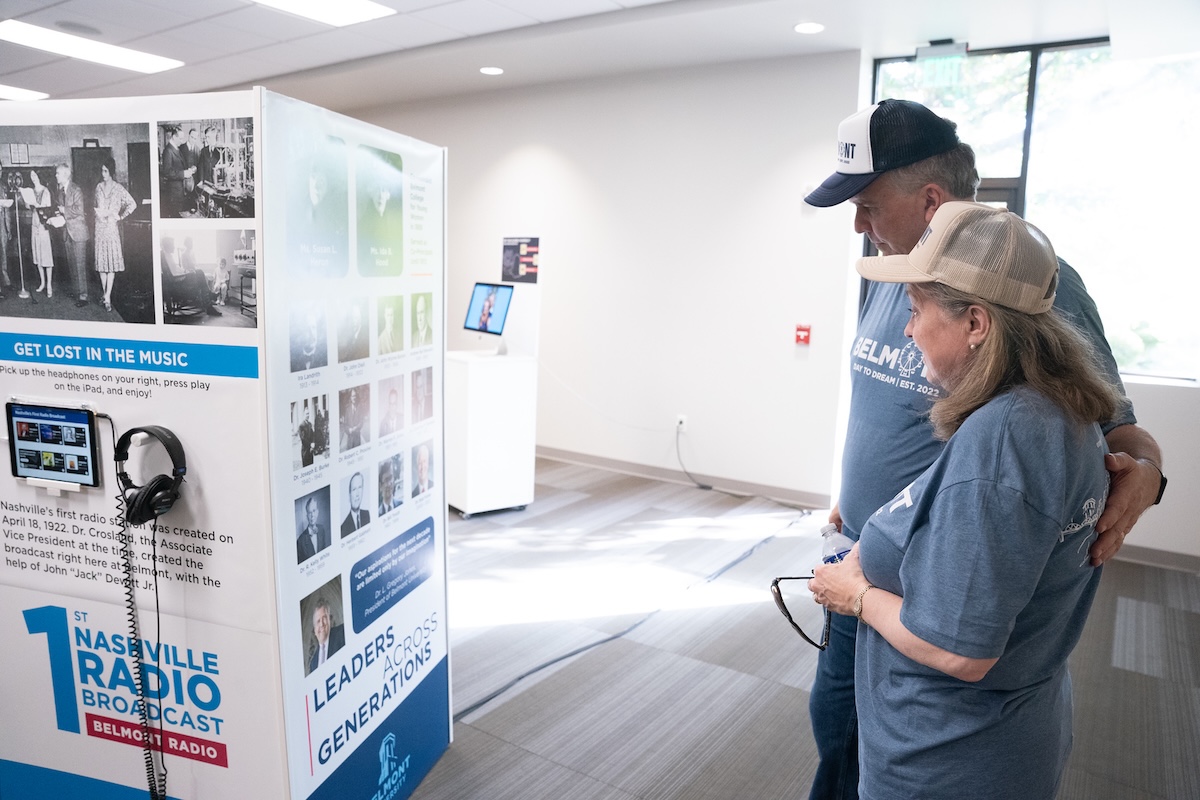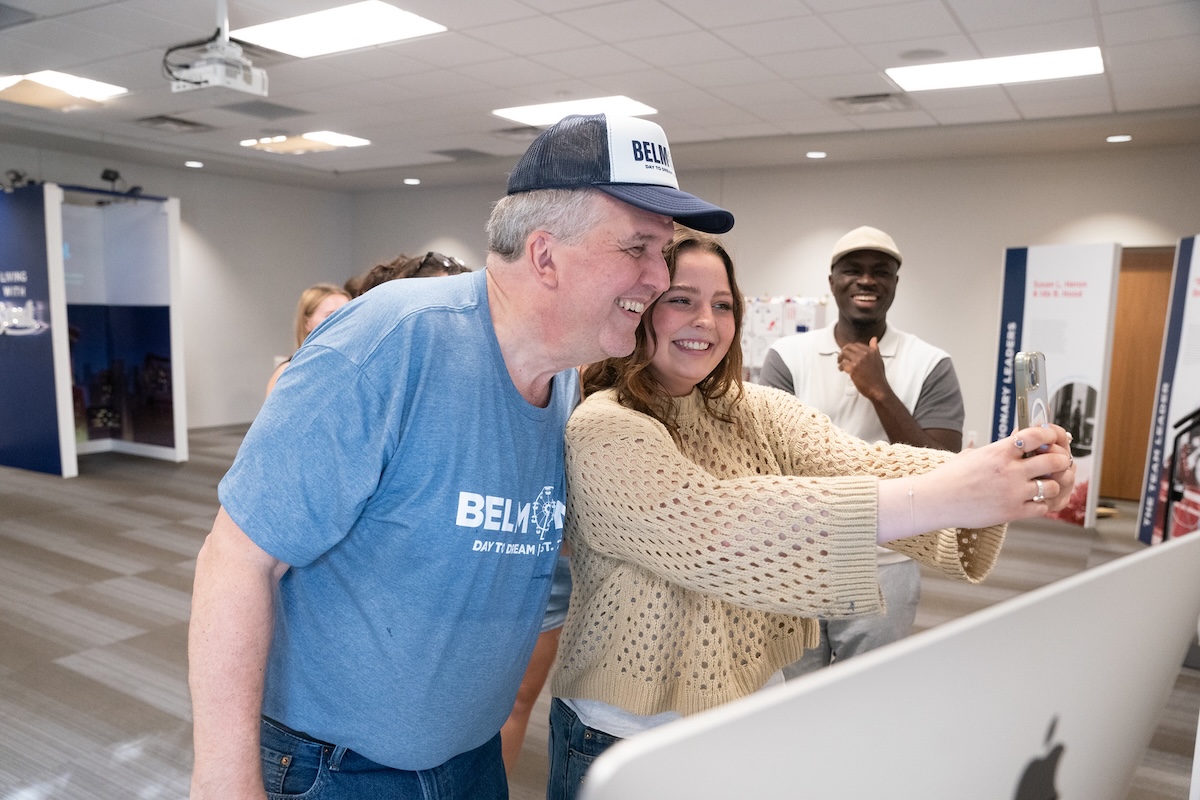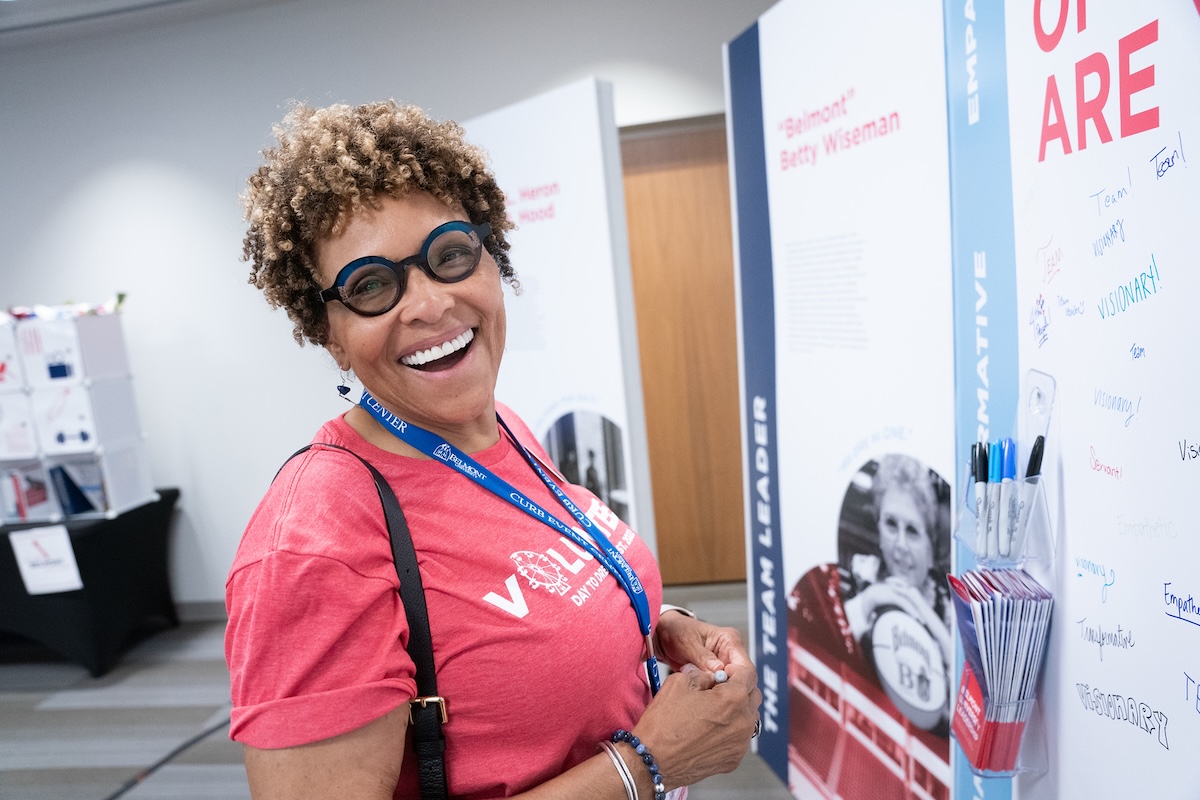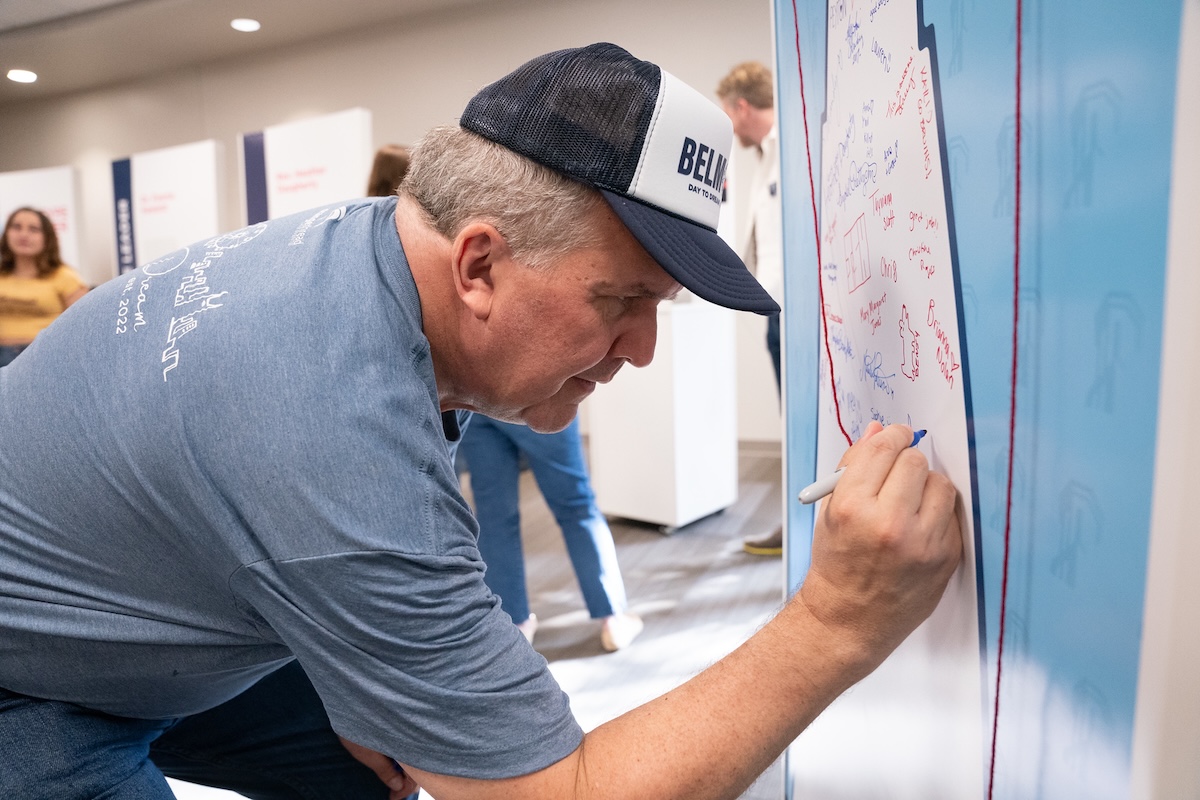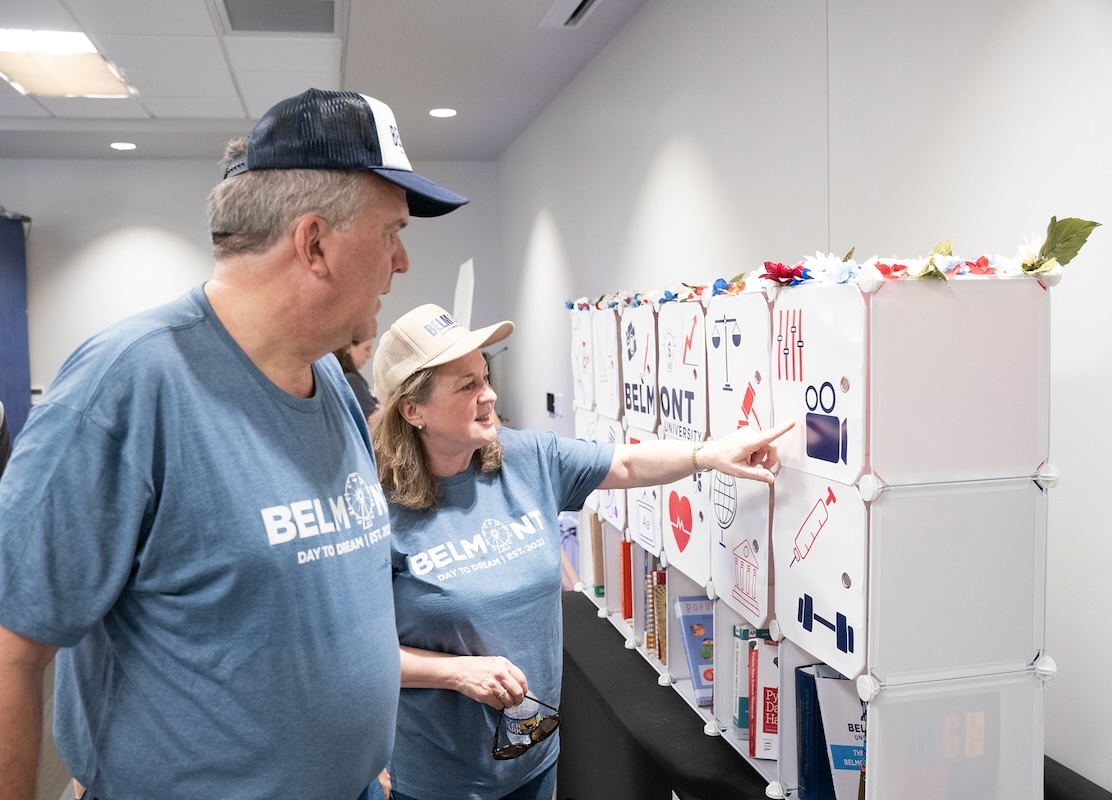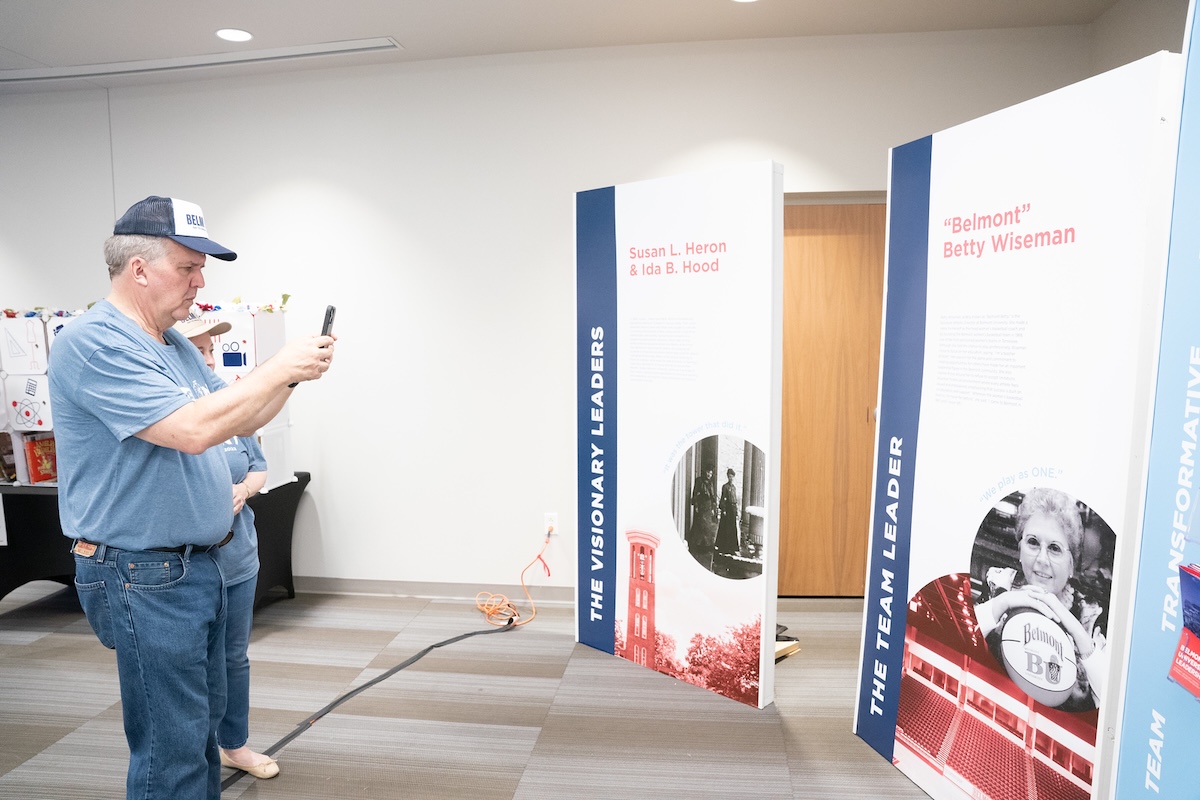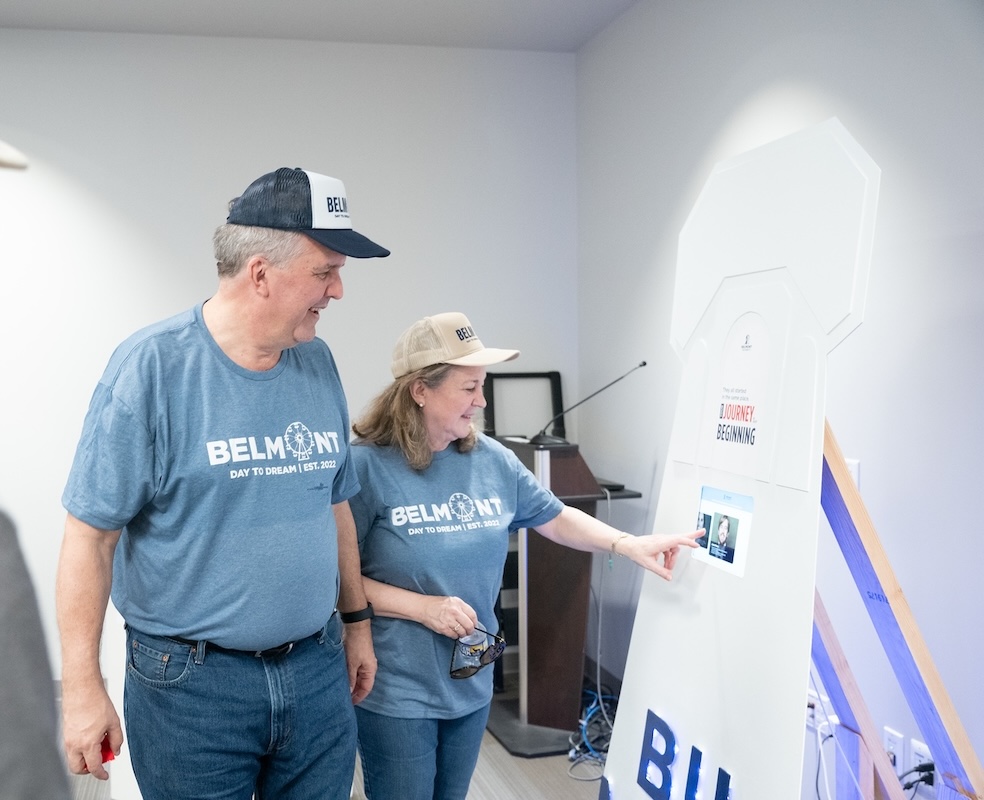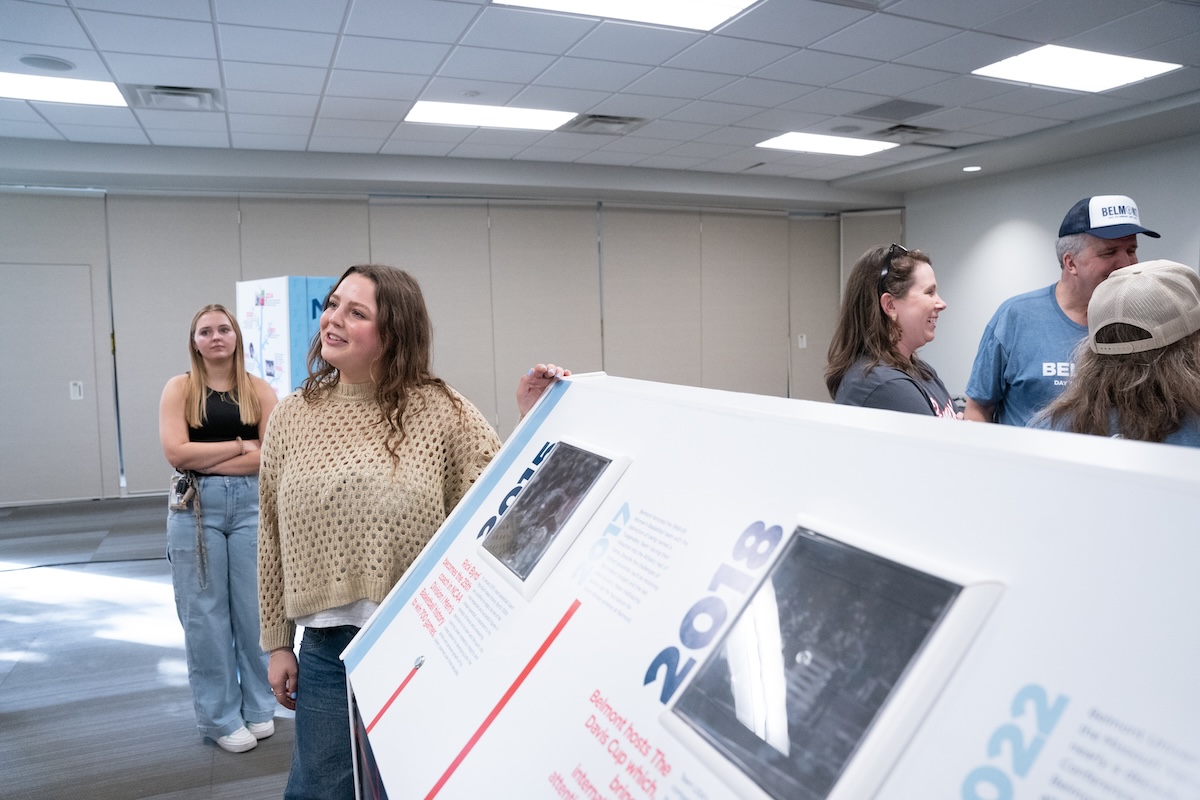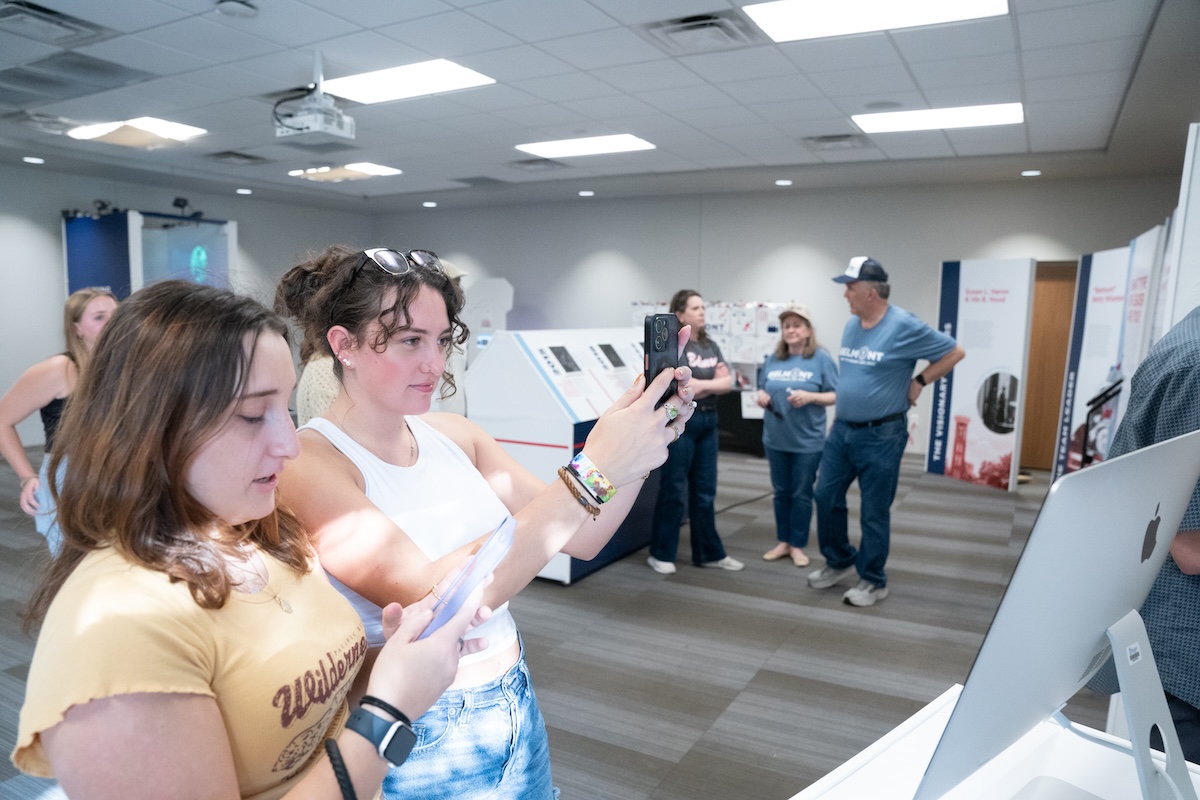Semester-long class project showcases University's legacy through cutting-edge technology at Hope Summit
An interactive installation transformed Belmont's rich history into an immersive experience during this year's Hope Summit "Day to Dream" event. The exhibit, crafted by Watkins students as part of a semester-long class project, offered visitors a dynamic journey through the University's evolution and achievements.
“As a University, we do not have a central location that tells the rich story of Belmont,” said Dr. Emmanuel Saka, assistant professor and chair of the Department of Design. “This exhibit was meant to tell Belmont's rich story and show current and future Bruins how they fit into the Belmont narrative.”
The installation featured four distinct sections: academic history, leadership, athletics and alumni. Each area incorporated cutting-edge interactive elements that brought history to life. Visitors could engage with Snapchat filters to dance alongside Bruiser, the University's beloved mascot, or take leadership quizzes that matched their personalities with influential Belmont leaders throughout history.
One of the exhibit's highlights was an interactive display featuring the University's first-ever radio recording, while a state-of-the-art projection mapping installation showcased Belmont's 'SOUL' initiative. Interactive panels throughout the space provided insights into the University's colleges, programs and notable alumni achievements.
The project's main learning outcome focused on teaching students to integrate technology through interactive media design for storytelling, while maximizing the strength in diversity regarding skills and background experiences through collaborative work.
For the Watkins students who created the installation, the project offered invaluable hands-on experience.
"We embrace a learn-by-doing mentality –– experiential learning," said Saka. "Few, if any, of the students had ever wired lighting, used power tools or immersed themselves in prototyping software before this class. Once the project was complete, they each played a part in all those things."
While temporary, the exhibit’s impact resonated beyond the Hope Summit and will pave the way for future exhibits.
“During the academic year, we are typically focused on our studies and seldom take time to reflect on Belmont's history and how far we've come,” Saka reflected. “The Hope Summit allowed us to reach new audiences and demonstrate the power of interactive design in storytelling. Telling the history of a university is vital as it preserves its legacy, celebrates its achievements and inspires future generations by connecting them to the institution's values and traditions.”
Interested?
Learn more about the experiential design at Belmont

